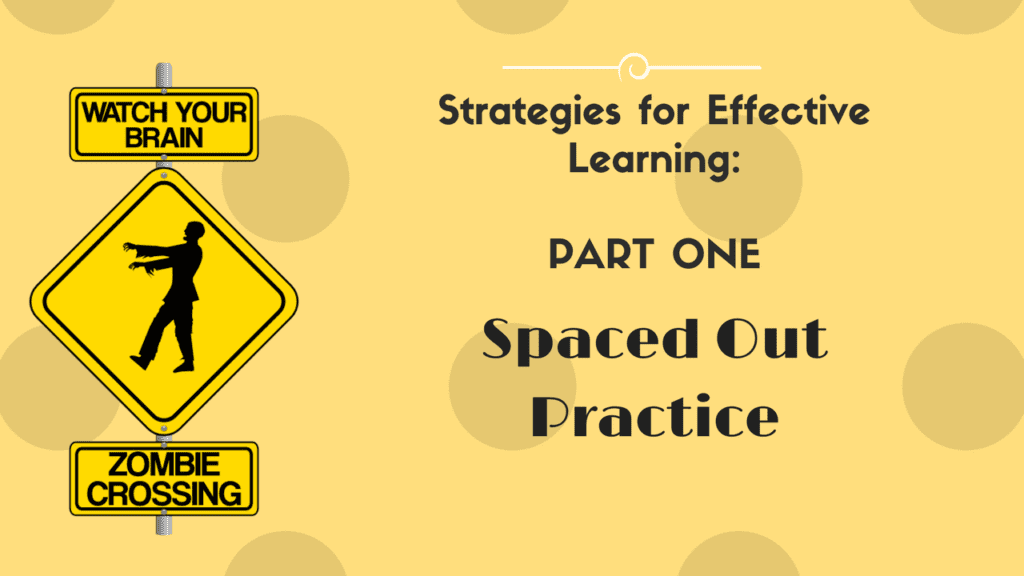Spaced Out Practice, Not Spaced-Out Kids!
Written by Preet Mankad
Published on February 13, 2017
 You’ve probably heard this advice about studying for an exam:
You’ve probably heard this advice about studying for an exam:
Don’t cram. Study a little every day. And get enough sleep!
But reading and spelling skills are not like math, science or history facts—or are they? What does memory research have to say about how we can best help children improve reading, spelling and writing skills?
Spaced out practice, the opposite of cramming, supports memory, so it applies to any skill, including playing a musical instrument or mastering a sport. This is why piano teachers give their students practice to do everyday and why soccer practice is not scheduled for just once a week.
In his guest post, Spacing in Teaching Practice, Jonathan Firth, a psychologist and teacher, reviews the history and research that dates from the 1800s, when early psychologist Hermann Ebbinghaus first tested how people remember information. His research on how well people remember nonsense syllables showed a “spacing effect”.
Today, after thousands of studies on human memory, we know much more about how practice helps us transfer information into long term memory and how to design practice that is as effective as possible. We know that sleep is important for memory transfer and that the way we use our digital devices and media can disrupt the type of sleep that supports memory. (Read this article to find out more about how sleep supports memory.)
Decoding and spelling can put high demands on memory, especially for students who have not yet mastered these skills to an automatic, effortless level. It’s no wonder that parents tell us that their struggling student is exhausted after school! Developing readers and spellers must juggle a lot of complex information, like:
- letters names and what sounds they can represent (For example, the letter -a- can represent a number of sounds, as in bat, bar, bail, bay, about…)
- how to write each letter correctly (for example, -d- versus -b-)
- how neighboring sounds and letters relate to spelling and pronunciation (For example, -ck- is used only following a vowel)
- how syllable patterns relate to pronouncing and spelling words (For example, the 2nd vowel sound in rabbit is spelled -i- but sounds like “uh”)
- how to spell when adding a suffix (for example, bat→ batting)
- how to read and spell common, old words that have unexpected patterns (for example, said)
- when to spell with capital letters and when not to
- when and how to use punctuation
And, of course, all this (and much more!) must be done fluently and automatically so there is memory capacity left over to process the meaning of words, sentences and paragraphs!
Practice is absolutely essential to developing expertise, but 2 hours of concentrated practice may be exhausting and not work as well as 15 -30 minutes a day of well-designed, “spaced out” practice. In other words, to keep from spacing out the child, space out the practice!
Lexercise Structured Literacy Teletherapy is designed with a little practice everyday. Here is a Lexercise blog series with information about how well-designed practice supports memory and learning.
You can learn more about Lexercise Structured Literacy Teletherapy and even schedule a free 15-minute consultation with a Lexercise dyslexia therapist here.
2 Responses to Spaced Out Practice, Not Spaced-Out Kids!
Leave a comment
Improve Your Child’s Reading
Learn more about Lexercise today.
Schedule a FREE
15-minute consultation



Here is a great article